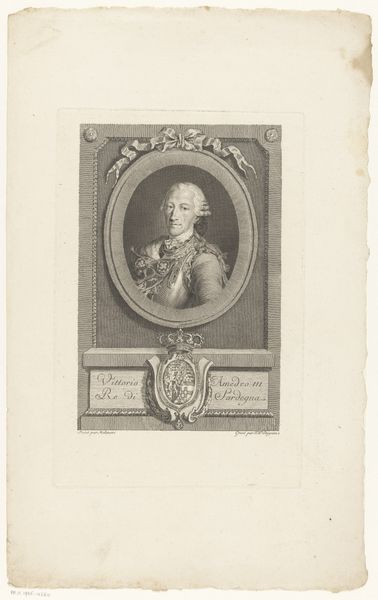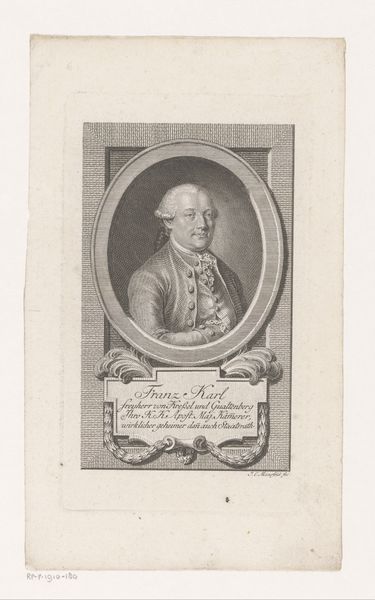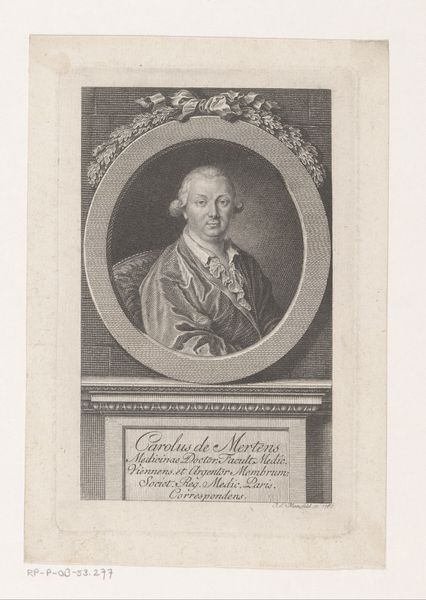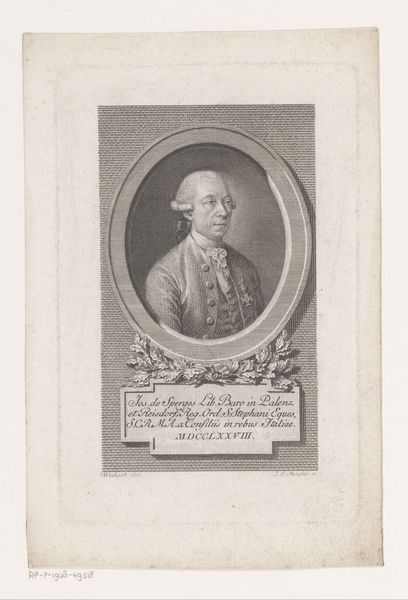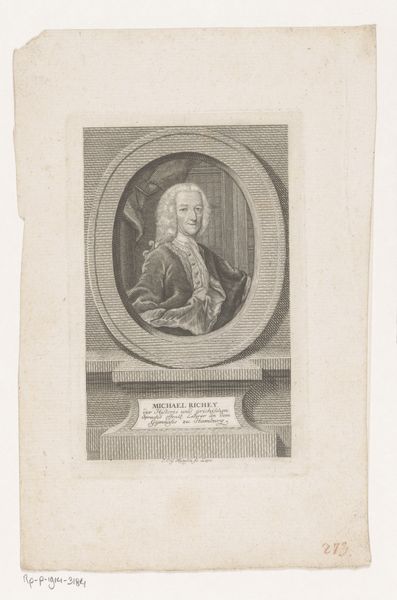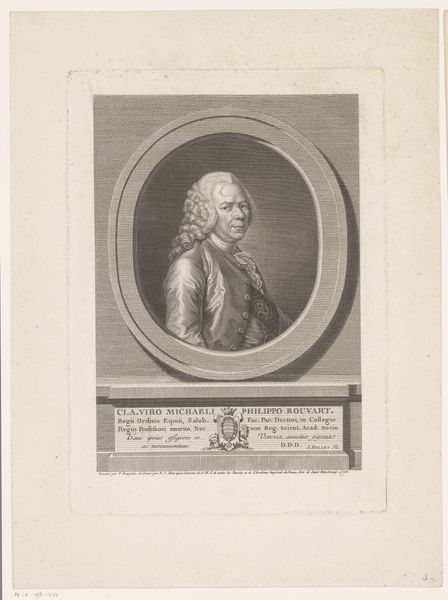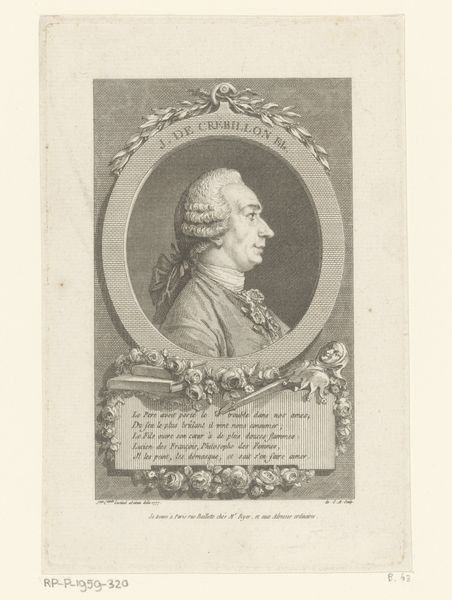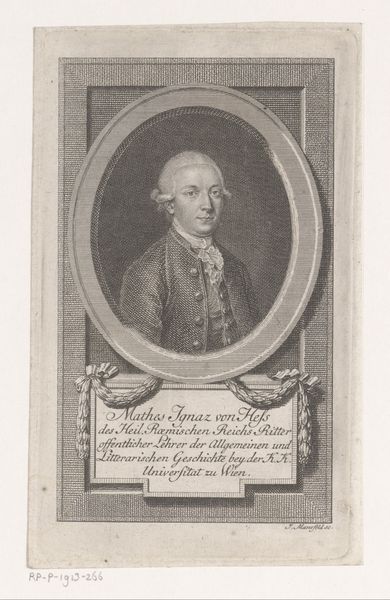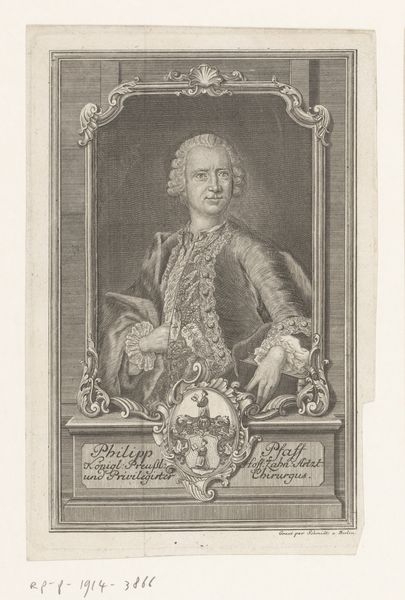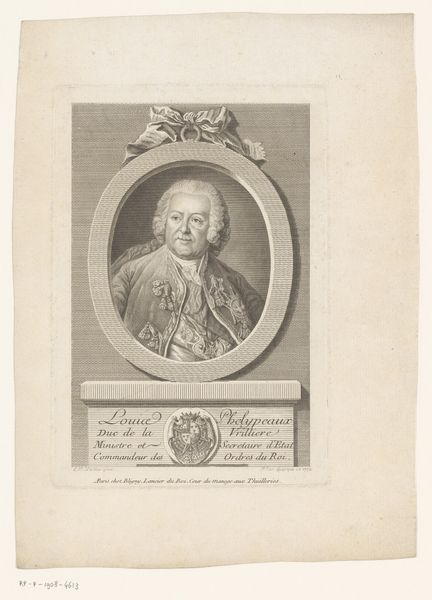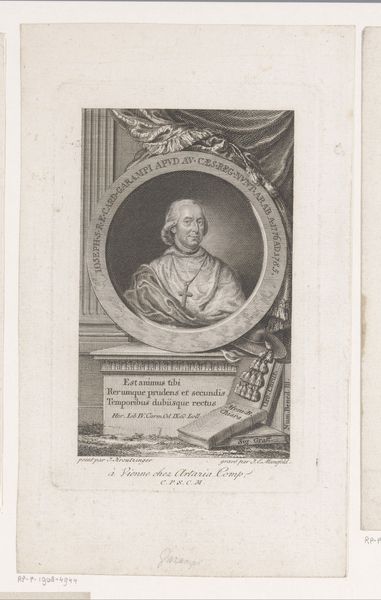
Dimensions: height 167 mm, width 100 mm
Copyright: Rijks Museum: Open Domain
Curator: So, here we have a portrait of Tobias Philipp von Gebler, engraved sometime between 1749 and 1796 by Johann Ernst Mansfeld. It’s quite striking, isn't it? Editor: Yes, the detail is incredible for a print. He looks very distinguished, a man of importance. How should we interpret this portrait within its historical context? Curator: Well, portraits like these weren't just about capturing a likeness. They were about solidifying power structures, weren't they? Think about the Baroque period, how heavily it leaned into displays of wealth and status. Von Gebler's ornate clothing and the inscription detailing his titles, all strategically crafted. Do you think the very act of creating and circulating such a portrait has political implications? Editor: Definitely! It's a clear statement about his position in society. The portrait served as propaganda and further legitimised the Austrian Aristocracy's status, perhaps also silencing dissenting voices through this symbolic power. Curator: Exactly. And beyond Gebler himself, what about the artist? How might Mansfeld, as the engraver, be implicated in these power dynamics? Was he simply a craftsman, or an active participant in shaping public perception? Editor: It makes you consider his role more critically. The portrait isn’t just about the sitter, but also about who is allowed to represent him, and how. I never considered prints in this way. Curator: These objects become powerful cultural artifacts when you start unpacking the layers of social relations they embody and reflect. Editor: It really highlights the importance of considering art as not just aesthetically pleasing but as active agents in shaping societal narratives. Curator: Precisely. Art acts as a mirror and a shaper of society, simultaneously reflecting existing power structures and actively participating in their perpetuation or subversion.
Comments
No comments
Be the first to comment and join the conversation on the ultimate creative platform.
